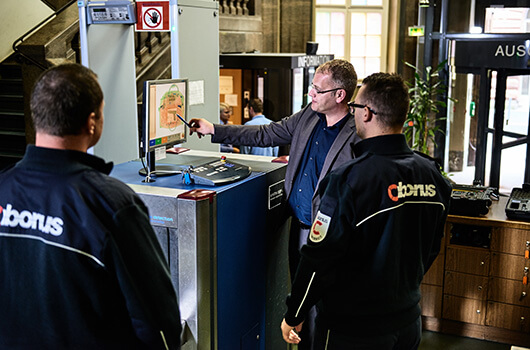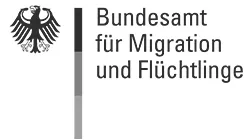Security analysis: Holistic security assessment for optimum protection
The CIBORIUS Group offers comprehensive security analyses that are individually tailored to your needs. You can rely on our expertise.

Individual security analysis: We build your customized security network
CIBORIUS builds a security network for each of its customers – and every network is different because every security requirement is different. That’s why we attach particular importance to smart planning in advance. Our experience helps us a lot, as does the close exchange with our customers. We also know that the best possible security can only be guaranteed if coordination, manpower and security technology interact perfectly.
The security analysis helps us to close security gaps right from the start, to plan customized measures and to develop a solution that works in the long term – and to work as cost-effectively as possible.
At a glance: Our measures in the area of security analysis
- Assessment of the situation, including through risk assessment
- Analysis of weak points and risks
- Definition of action radii and prevention measures
- Development of a closely coordinated concept
- Safety training for your employees
- Planning and implementation of fire protection measures and safety technology
- Competence in dealing with safety standards, guidelines and applications
- Customized concepts for individuals with protection needs
- Security networks for service providers, wholesale, retail and industry
- Transparent and recorded cooperation with protective forces such as the fire department, police, authorities and the company’s own security forces
Our locations: Thanks to our security analysis, you know all your potential risks
We operate nationwide and have a team of experienced experts and consultants at each of our locations… also in your area.
FAQ – Security analysis: Frequently Asked Questions
How often should a safety analysis be carried out?
A security analysis should be carried out regularly, at least once a year or when significant changes occur within the organization, such as new locations, changes in the IT infrastructure or after security incidents. Continuous review and updating of security measures is crucial to ensure that they meet the current threats and risks.
Which methods are used in the safety analysis?
Various methods are used in the safety analysis, including
- Qualitative methods: Interviews, questionnaires and workshops to gather opinions and assessments.
- Quantitative methods: Statistical analyses, risk and vulnerability assessments based on data.
- Technical audits: Penetration tests, vulnerability scans and other technical audits of existing security systems.
- Scenario analyses: Simulation of potential threat scenarios to assess their impact and the effectiveness of security measures.
Who should carry out a security analysis?
A security analysis should be conducted by experienced security professionals who have extensive knowledge of risk management, security procedures and technology solutions. External security consultants are often brought in to ensure an objective assessment and provide specialized expertise. In large organizations, an internal team of security professionals may also perform the analysis.
What steps are included in a typical security analysis?
A typical security analysis comprises several steps:
- Risk assessment: Identification of potential threats and vulnerabilities.
- Risk analysis: Assessment of the probability and potential impact of these threats.
- Vulnerability analysis: Examination of existing security measures and their effectiveness.
- Action planning: development and implementation of risk mitigation strategies.
- Continuous review: Regular monitoring and updating of security measures to take account of new threats and changes.
What is a security analysis and why is it important?
A security analysis is a systematic process for identifying and evaluating potential security risks and vulnerabilities within an organization or building. It is important for identifying security gaps, developing appropriate protective measures and improving overall security. A thorough security analysis helps to minimize risks, prevent damage and ensure the safety of people and property.
What are the long-term benefits of regular safety analyses?
Long-term benefits of regular security analysis include risk reduction, cost savings through preventative measures, improved employee satisfaction and the creation of a safe and secure business environment. Continuous analysis also ensures adaptation to changing threats and security requirements.
How do you react to the results of a safety analysis?
The results serve as the basis for the implementation of comprehensive safety measures, training and continuous improvements. Monitoring is carried out through regular audits and log analyses in order to react appropriately to current threats.








